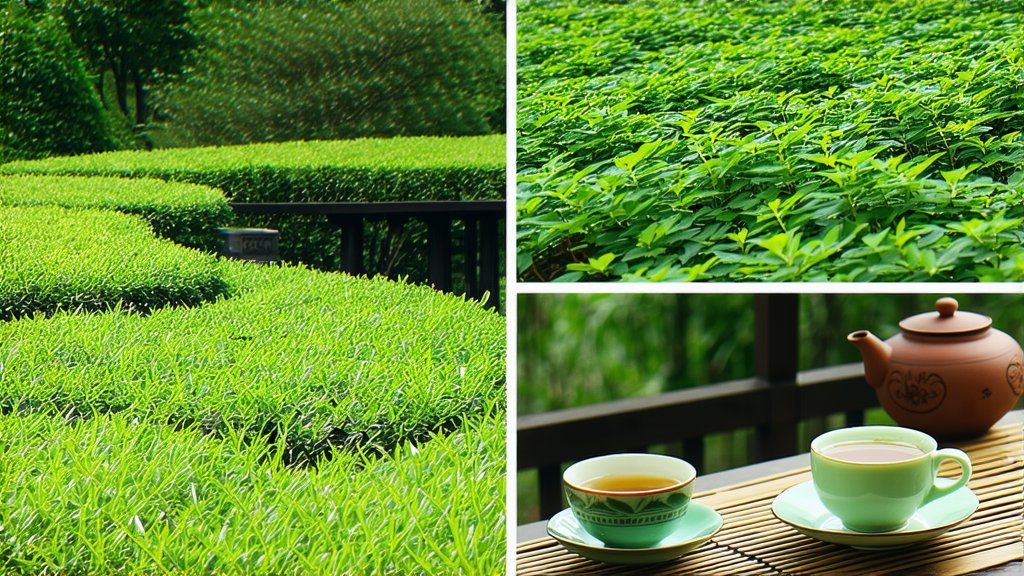
In the vast and diverse landscape of Chinese tea culture, few varieties captivate the senses and evoke a sense of wonder quite like Junshan Yinzhen, a distinguished member of the yellow tea family. This golden elixir, hailing from the misty mountains of Junshan County in Hunan Province, offers not just a beverage but an experience steeped in history, tradition, and meticulous craftsmanship. Join us on a journey to unravel the secrets behind this exquisite tea, exploring its historical roots, unique characteristics, intricate production process, and the art of its appreciation.
Historical Legacy: A Glimpse into the Past
The tale of Junshan Yinzhen is intertwined with that of its birthplace – Junshan Island, nestled amidst the verdant Dongting Lake. Legend has it that this rare tea was first discovered during the Tang Dynasty (618-907 AD), making it one of the oldest known teas in China. Its name, "Yinzhen," translates to "silver needle," referencing the delicate, downy buds that characterize this tea. Over centuries, Junshan Yinzhen has been revered as a symbol of purity and refinement, often reserved for imperial courts and high-ranking officials.
A Symphony of Flavors: Exploring Varieties
While Junshan Yinzhen remains the most celebrated representative of yellow teas, it is important to note that the category encompasses a range of other intriguing varieties. These include Mengding Huangya (also known as Shoumei), a lightly oxidized tea from Fujian Province, and Beichuan Mihuang, another Hunan specialty known for its distinctly sweet aftertaste. Each variety boasts its own unique flavor profile, processing techniques, and regional characteristics, contributing to the rich tapestry of Chinese tea heritage.
The Art of Craftsmanship: From Leaf to Cup
The creation of Junshan Yinzhen is a testament to the artistry and precision involved in traditional Chinese tea making. The process begins with the careful selection of only the finest, young tea buds, typically harvested in early spring when they are at their freshest and most nutrient-rich. These buds undergo a series of meticulous steps:
-
Withering: Freshly picked buds are spread out under the sun or in a shaded area to reduce moisture content slightly, allowing enzymes to initiate a gentle oxidation process.
-
Fixation: To halt further oxidation, the buds are briefly exposed to heat through pan-frying or steaming, preserving their vibrant green color and locking in aromatic compounds.
-
Wrapping and Humidifying: This unique step sets yellow tea apart. The fixed leaves are wrapped in paper or cloth and left in a humid environment for several hours to days, allowing controlled oxidation to occur gradually. This process transforms the tea's color to a subtle yellow hue.
-
Drying: Finally, the tea is dried thoroughly to remove any remaining moisture, ensuring longevity and stability.
Each stage requires the skilled hand of an experienced tea master who monitors temperature, humidity, and timing with utmost care, ensuring that every batch maintains the signature qualities of Junshan Yinzhen.
Tasting the Golden Elixir: A Sensory Experience
To truly appreciate Junshan Yinzhen, one must engage in a mindful tasting ritual that awakens all the senses. Here's how to embark on this sensory journey:
-
Warm the Teaware: Begin by rinsing your teapot and cups with hot water to enhance the aroma and maintain the tea's temperature.
-
Measure and Infuse: Use about 3-5 grams of Junshan Yinzhen per 200ml of water. Pour hot water (around 80°C) over the tea leaves, allowing them to unfurl gracefully.
-
Steep Time: Let the tea steep for approximately 2-3 minutes for the initial infusion. Subsequent infusions can be made with slightly longer steeping times.
-
Observe: Admire the pale golden liquor, a reflection of the tea's delicate nature.
-
Smell: Inhale deeply to detect the subtle floral and fruity notes, often accompanied by a hint of honey.
-
Sip and Savor: Take small sips, allowing the tea to coat your palate fully. Note the smooth texture, sweet aftertaste, and the absence of bitterness or astringency.
-
Multiple Infusions: Junshan Yinzhen is renowned for its ability to withstand multiple infusions, each revealing new layers of complexity.
Conclusion: A Timeless Treasure
Junshan Yinzhen stands as a shining example of China's rich tea legacy, embodying centuries of tradition, craftsmanship, and a deep connection to nature. Its gentle flavor profile, enduring aroma, and the meticulous process behind its creation make it a cherished treasure among tea connoisseurs worldwide. As you sip this golden elixir, immerse yourself in the stories it carries and the cultural heritage it represents, a true testament to the artistry of Chinese tea making.